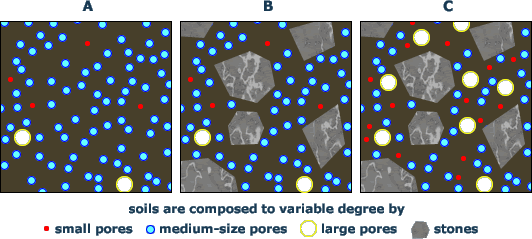 |
|
|
|
|
|
|
The three drivers of moisture storage in soils are:
|
|
1 - Take three schematic soil types for a test:
|
|
Alpine substrates are commonly rich in medium size pores and have a high water holding capacity (often around 50 %), however stones and shallow depth can cause problems. |
|
2 - The risk for soil moisture to become limiting for plants. |
Design your drought risk scenario: Allow for
and assume
Try the following:
Note the effect on the stored water and the number of days this water can support a 4 mm daily water loss, as is typical for bright summer weather. Now combine A and B (increase stone content and reduce depth). Do you have a feeling for the key role soil depth and stones play in actual water relations of plants under a given precipitation regime? |
29 August 2011 |
||
| |
||
